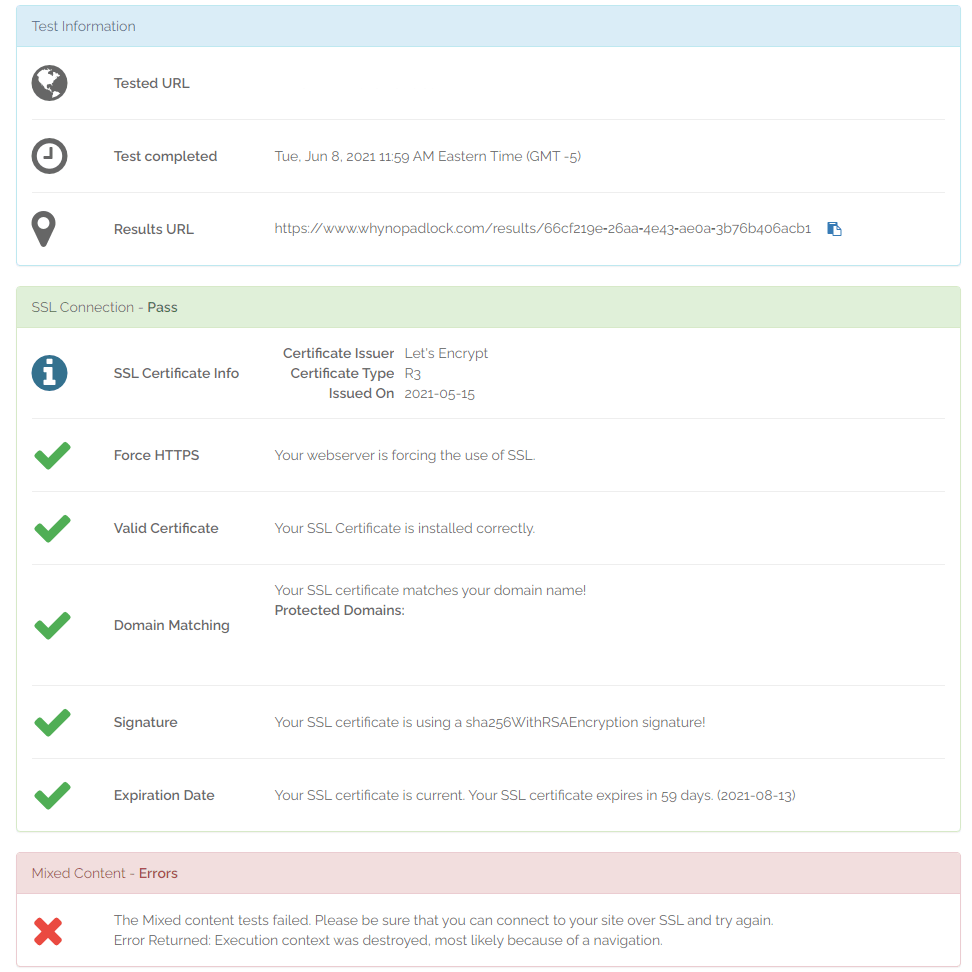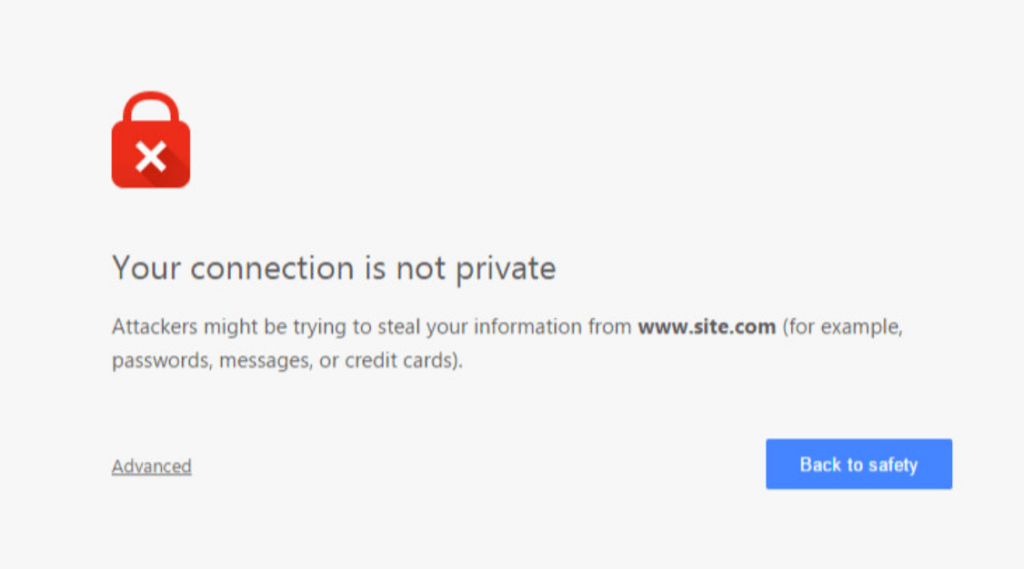If you’ve been paying attention to the news lately, cyberattacks are a regular occurrence. Unfortunately, cyberattacks also occur more often than most people even realize. Think of this. You never know your information is compromised until it is revealed. That’s a scary idea.
You may have heard of the terms SSL and TLS. In technical jargon, they stand for Secure Sockey Layer and Transport Layer Security. Simply put, each is an encryption method to protect communications over the internet. In addition, they are responsible for website loading in HTTPS. Don’t worry about what this all means. I will break this topic down into simple terms to understand the importance of securing your web properties.
WhyNoPadLock
Before we jump into some reasons why it’s great to have a secure website, let’s look at a popular tool to help you determine why your website isn’t safe. One of the most used tools, boasting 8 million website scans and counting, is called Why No Padlock?
Why No Padlock is a developer’s tool (we will call it WNPL for now). Very easy to use and simple to incorporate. WNPL is a scanning tool to review your website for security issues and tell you what changes you need to make to secure your website. Below is a sample test we ran:

To break this down, we will focus on the green and red section below:
Green Section
- SSL Certificate Info: This is the deed to your home. The date and issuer of your SSL certificate. This one uses a popular issuer called Let’s Encrypt. We’ll talk about them later.
- Force HTTPS: The server where your website is hosted redirects all traffic from unsecured pages to the secured pages.
- Valid Certificate: Your website has an updated security certificate. These expire at regular intervals.
- Domain Matching: In plain terms & sticking with the home building analogy, the deed matches the home’s address.
- Signature: Your security certificate is using an up-to-date encryption method.
- Expiration Date: Just as it sounds, this verifies your certificate is current and when it expires.
Red Section
- Mixed Content Errors – This is a common issue when you redesign and website or add new content. Mixed content means that a file (usually an image) is loading on the site, but the security protocol (HTTP vs. HTTPS) isn’t secure. In simple terms, the file name needs to be updated to have HTTPS at the beginning. For anyone who is a developer, this is a common issue that’s easily fixed.
How to Secure Your Site with SSL
One of the first steps to securing your site is installing what’s called a security certificate. A quick Google search will give you many results and options, but one of the most popular options is Let’s Encrypt. LE is a free and automated security authority run by the Internet Security Research Group (ISRG). This group created Let’s Encrypt because they wanted a more secure web.
A security certificate is similar to your alarm system in your home. It’s the yard sign outside your house that lets visitors know this is a safe and secure home. Much like a home security system, a security certificate must remain updated regularly to ensure the website (your house) stays protected. This is especially important if you are processing sensitive data such as payments or personal information. One of the most significant penalties of not having a security certificate (outside of being hacked) is Google displaying a beautiful screen telling your visitors that your website isn’t secure. This is what that looks like:

Credit: StudioHawk
SEO
As with all things competitive, SEO is a race to the top. All SEO means is the optimization of your website so that search engines will recommend your site favorably. Many components go into good SEO, such as content structure, sitemaps, alt tags, and more. Security is one of the significant points to this as well. As I mentioned before, when your site poses a security threat, search engines will not recommend your site to visitors. Because in their eyes, your website poses a threat to the safety and welfare of your users.
This is the same thought when you are buying a home. There is a reason that specific neighborhoods are more valuable than others, and usually, the crime rate has to do with it. If people do not feel safe in their homes, many people will not choose to live there.
If visitors do not feel safe on your website, then they will either leave or not visit at all.
Peace of Mind
I believe this is one of the best reasons to have a secure website – peace of mind. Imagine running a wildly popular online store, but you can’t sleep at night knowing that your visitors’ personal information (addresses, phone number, email) is at risk of being stolen. That doesn’t sound fun.
Having peace of mind that you are making sales in your sleep is a great feeling. Imagine being a small business and make 5-10 sales per day on autopilot, and your customers are raving about how comfortable they feel shopping on your site. That is a business owner’s dream. Suppose you make sure your website is secure (amongst the other SEO factors). In that case, it will be recommended to your target audience regularly, thus creating more traffic and, by nature, making more sales.
SSL is an essential feature of your website. It can be the difference between people getting in contact with you and running them off to your competitors. You should take your website security seriously because your visitors do.
You have any additional questions or thought about SSL or website security in general? Drop me a line, and I’ll be glad to help.
All the best!
